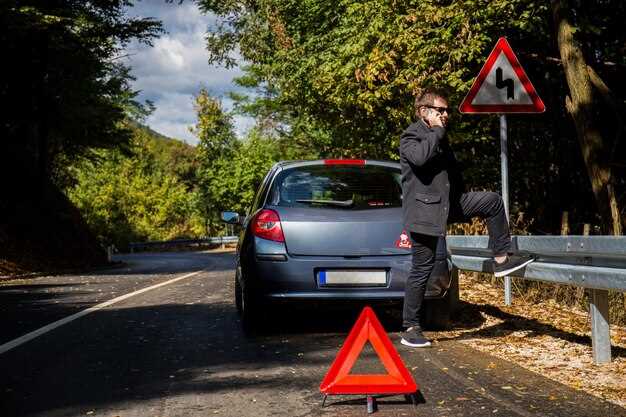
Driving is an integral part of modern life, yet it comes with inherent risks. To enhance road safety, it is essential to adopt defensive driving techniques that empower drivers to anticipate and respond to potential hazards. These techniques focus on cultivating a proactive mindset, enabling drivers to manage risks effectively and create safer environments for themselves and others on the road.
Defensive driving goes beyond simple adherence to traffic laws; it encompasses a comprehensive set of skills and mental strategies designed to minimize accidents. By understanding the behavior of other drivers and staying prepared for unexpected situations, individuals can significantly reduce their chances of being involved in an accident. Whether it’s maintaining safe following distances, anticipating the actions of pedestrians, or adjusting to changing weather conditions, employing the right techniques can make all the difference.
Incorporating defensive driving techniques into daily routines is vital for all drivers, from beginners to seasoned veterans. This article will delve into essential defensive driving strategies that not only enhance personal safety but also promote a culture of cautious and responsible driving on our roads. Understanding these techniques is the first step toward making our everyday commutes safer for everyone.
Anticipating Other Drivers’ Actions on Busy Streets

Anticipating other drivers’ actions is a critical component of defensive driving, particularly on busy streets where the likelihood of unpredictable behavior increases. To enhance safety, it is essential to remain vigilant and aware of your surroundings, continuously assessing the movements of nearby vehicles.
Begin by observing the body language of other drivers. For example, look for indicators such as sudden slowing down, blinking turn signals, or changes in lane position. These can provide clues about their intentions. Anticipating potential lane changes or abrupt stops can help you react promptly and avoid collisions.
Additionally, make a habit of maintaining a safe following distance. This allows for ample reaction time should the driver ahead brake unexpectedly. A two to four-second gap is advisable, adjusting based on road conditions and traffic flow.
Pay attention to intersections, as they are common areas for unpredictable behavior. Watch for vehicles that may not yield properly or may enter an intersection at high speed. Being prepared to stop or maneuver around these potential hazards is crucial.
Consider the environment as well. Weather conditions can alter driving patterns, with rain or snow often causing vehicles to behave erratically. Anticipate slower reactions from others and adjust your speed accordingly. Being mindful of such factors enhances your ability to predict and respond appropriately.
Lastly, remember that not all drivers are experienced or attentive. Always be prepared for unexpected actions, such as a driver suddenly changing lanes without signaling. Adopting a defensive mindset helps cultivate an awareness that prioritizes safety and reduces risk on busy streets.
Maintaining Safe Following Distances in Various Conditions
Maintaining safe following distances is crucial for defensive driving techniques, ensuring not only your safety but also the safety of others on the road. The appropriate distance can change based on driving conditions, such as weather, traffic, and road surfaces. Understanding how to adjust your following distance in these situations is a vital skill for any driver.
In ideal conditions, a common rule is the “three-second rule.” This technique involves choosing a stationary object in the distance, such as a sign, and counting the seconds it takes from the moment the vehicle in front of you passes it until your vehicle reaches that same point. This method provides a safe buffer, allowing you time to react to sudden stops or emergencies.
In wet or slippery conditions, increase your following distance to at least four to six seconds. Reduced traction during rain or snow can significantly increase stopping distances. By allowing more space, you provide yourself with the necessary time to respond if the vehicle ahead suddenly decelerates or loses control.
During heavy traffic, maintaining a safe following distance can be more challenging. However, it is crucial to keep enough space to account for sudden stops. This may mean a shorter distance than in optimal conditions, yet it should still be greater than what feels comfortable in free-flowing traffic, as this can prevent rear-end collisions.
When driving in fog or low visibility conditions, you should increase your following distance even further–up to eight seconds–if necessary. Reduced visibility limits your ability to see brake lights and other warnings from the vehicle ahead. A greater distance allows for a longer reaction time for unexpected changes in speed or direction.
In summary, your following distance should adapt to the driving conditions you encounter. Consistent evaluation of these situations, combined with effective defensive driving techniques, can significantly enhance road safety for everyone involved.
Utilizing Mirrors and Blind Spot Checks for Enhanced Awareness

In the realm of defensive driving, the effective use of mirrors and consistent blind spot checks significantly enhances road awareness and safety. Mirrors serve as essential tools that provide crucial visibility of the surrounding environment, allowing drivers to make informed decisions on the road.
It’s vital to properly adjust your rearview and side mirrors to minimize blind spots. The side mirrors should be set so that the edge of the vehicle is just visible, maximizing the area behind you that is covered. Regularly checking these mirrors can help identify vehicles approaching from behind or beside you, reducing the risk of accidents during lane changes and merges.
In addition to mirror usage, blind spot checks are an indispensable aspect of safe driving practices. Before changing lanes or making turns, it is critical to physically turn your head and glance over your shoulder to ensure that no vehicle is lurking in your blind spot. This simple action can often prevent collisions with vehicles that are not visible in your mirrors.
Adopting these habits contributes to a proactive approach in defensive driving, where awareness and anticipation of potential hazards are key. By consistently utilizing mirrors and performing blind spot checks, drivers can maintain a safer driving environment for themselves and others.